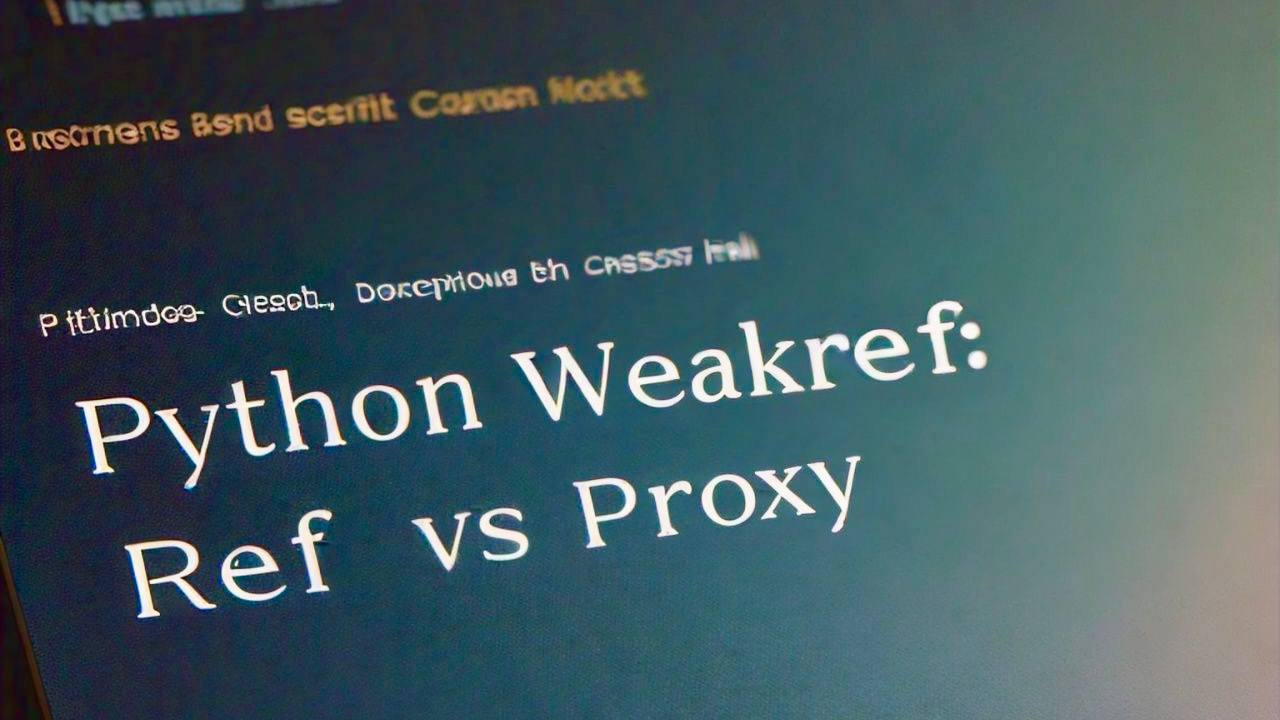Introduction
When diving into the world of Python programming, you’ll eventually encounter the concept of memory management. One powerful tool in this realm is the weakref module. In this post, we’ll explore two key components of this module: ref and proxy. Understanding these can significantly improve your code’s memory efficiency and help you become a more proficient Python developer.
What is weakref?
Before we dive into the specifics, let’s understand what weakref is. The weakref module in Python allows you to create references to objects without increasing their reference count. This is particularly useful when you want to cache or map objects in a way that doesn’t prevent them from being garbage collected.
weakref.ref: The Basics
weakref.ref creates a weak reference to an object. Here’s what you need to know:
- It returns a callable object that you can use to access the referenced object.
- If the referenced object no longer exists, calling the reference returns None.
- You need to call the reference to get the original object.
Example of weakref.ref
Let’s look at a simple example:
import weakref
class MyClass:
pass
obj = MyClass()
ref = weakref.ref(obj)
print(ref()) # Outputs: <__main__.MyClass object at ...>
del obj
print(ref()) # Outputs: None
weakref.proxy: The Alternative
weakref.proxy creates a proxy object that behaves like the original object. Key points include:
- It allows you to use the proxy as if it were the original object.
- When the original object is garbage collected, using the proxy raises a ReferenceError.
- You don’t need to call the proxy to access the original object’s attributes or methods.
Example of weakref.proxy
Here’s how you might use a proxy:
import weakref
class MyClass:
def say_hello(self):
return "Hello, World!"
obj = MyClass()
proxy = weakref.proxy(obj)
print(proxy.say_hello()) # Outputs: Hello, World!
del obj
try:
print(proxy.say_hello())
except ReferenceError:
print("Object no longer exists")
ref vs proxy: Key Differences
Now that we’ve seen both in action, let’s compare them:
- Usage:
refrequires calling to get the object, whileproxyis used directly. - Error Handling:
refreturns None for deleted objects,proxyraises a ReferenceError. - Transparency:
proxyis more transparent in usage, behaving like the original object. - Flexibility:
refgives you more control over how to handle cases where the object no longer exists.
When to Use Each
Choose ref when:
- You want explicit control over when to check if the object still exists.
- You’re comfortable with additional syntax (calling the reference).
- You prefer returning None for non-existent objects rather than raising exceptions.
Choose proxy when:
- You want code that looks and feels like it’s working with the original object.
- You prefer exceptions for handling cases where the object no longer exists.
- You’re working with code that expects the actual object type, not a weakref.
Conclusion
Both weakref.ref and weakref.proxy are powerful tools for memory management in Python. Understanding their differences allows you to choose the right tool for your specific needs. By using weak references, you can create more memory-efficient code, especially when dealing with caches or large object graphs.
Remember, the key to mastering these concepts is practice. Try implementing both in your projects and see which feels more natural for your coding style. Happy coding!

